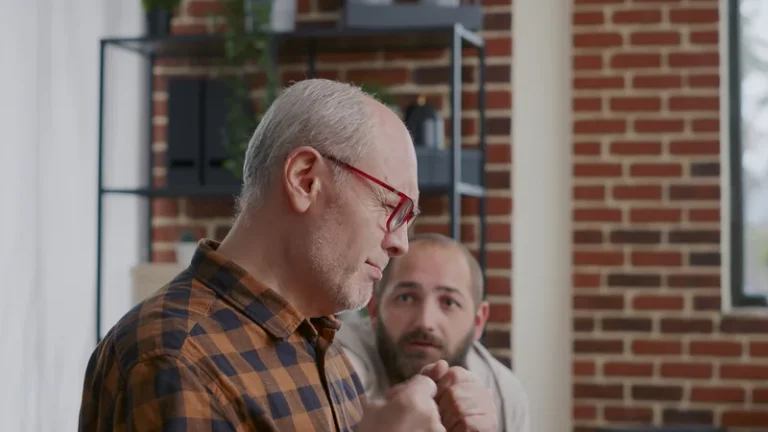
Keep in mind none of these treatments will be effective if you continue using cannabis products. A 2017 review of studies found that 97.4 percent of people who developed CHS reported using cannabis at least weekly. About 75 percent reported using cannabis regularly for over a year. Research suggests that CHS is a permanent condition that can only be effectively treated by quitting cannabis. Continuing to use cannabis despite CHS can lead to potentially life threatening complications. The most important thing to make CHS better is stopping marijuana use.
Find more top doctors on

Once a person develops the condition, he or she has probably done something permanent. Further exposure to cannabis highly increases risk of recurrence. Persuading patients to accept this can be difficult, Habboushe said. Although neither Denney nor Brian accepted the diagnosis completely, she urged him to consider not smoking as a process of elimination.

Workplace Health
Secondhand chs smoking smoke increases the risk of asthma attacks, respiratory illness, stroke, heart disease, and lung cancer in nonsmoking adults and children. Children and seniors, nearly half of all NYCHA residents, are often impacted the most. Eliminating smoking indoors and close to buildings is the best way to protect people from exposure to secondhand smoke. But when it does, it represents a potentially serious health condition. If you identify among those who have been using cannabis at least once a day for ten years or more, you are at risk. If this use began in your early adolescence, the risk increases.

Cannabinoid Hyperemesis Syndrome Treatment
CHS (also known as Cannabis Hyperemesis Syndrome) does not threaten every steady cannabis user. It may result from cannabis strain, dirty pipes and bongs, or an individual’s predisposition to digestion problems. The vomiting aggravates intestinal cramps, exhausts bodily fluids, and taxes other systems, too.
- When you use weed, these compounds bind to cannabinoid receptors found in your brain, digestive tract (gut), and certain cells in your body.
- Your doctor may ask you questions, like how long you’ve been using cannabis and what type of products you normally use.
- Cannabinoid hyperemesis syndrome (CHS) happens when you have cycles of nausea, vomiting and abdominal pain after using cannabis (marijuana) for a long time.
- First, doctors treating people with CHS advise them to stop using marijuana.
- Denney had no reason to be concerned about cannabinoid hyperemesis syndrome.
However, doctors exercise caution when prescribing lorazepam because it is a controlled substance with the potential for abuse and addiction. The use of lorazepam for CHS is also off-label, so a person’s doctor would need to make them aware of this fact. Some people with CHS require pain relievers if abdominal pain is present. Clinical guidelines for the diagnosis of CHS do not currently exist.
Cannabinoid Hyperemesis Syndrome (CHS) and the Cyclic Vomiting Syndrome (CVS) in Adults

The common antiemetic odansetron doesn’t seem to work, he says. Fortunately, an older medication, droperidol, does seem effective in stopping the vomiting. Patients with CVS also have times where they are feeling sick to the stomach and can also throw up for between 12 hours to about a week. This can happen when you are stressed, excited, have an infection or when women have their period.
How is cannabinoid hyperemesis syndrome diagnosed?
- Ironically, one of the potential complications of long-term cannabis use is a condition called cannabis hyperemesis syndrome (CHS).
- Smoking in these areas is a violation of the public housing lease.
- A health care provider may diagnose CHS based on reported symptoms, medical history, and by ruling out other causes of nausea and vomiting.
- If you are worried about your marijuana use, it’s time to reach out for help.
- Because CHS is a fairly new medical condition, not all doctors know about it.
- With the consumption of marijuana increasing due to the legalization of its recreational use in many states, doctors may receive more reports of side effects from marijuana use.
When you use marijuana for many years, it can start to slowly change how the receptors in your body respond to the cannabinoid chemicals. For example, the drug affects the receptors in the esophageal sphincter, the tight band of muscle that opens and closes to let food go from your throat to your stomach. If this flap doesn’t work properly, your stomach acids might flow upward and cause you to have nausea and vomiting. One 2018 study found that 32.9% of self-reported frequent marijuana users who’d gone to the emergency room (ER) had symptoms of CHS. And a 2022 Canadian study found that ER visits for CHS-related problems had increased 13-fold between 2014 and 2021. (Recreational use and sale of cannabis in Canada was legalized starting in 2018).
It is unclear why some people who use cannabis often and for a long period of time develop CHS and others don’t and if genetics play a role. Even cannabis products that don’t contain THC have the potential to cause or worsen CHS. A 2016 case study describes two deaths due to complications of CHS. The cause of death in both people was found to be hyponatremic dehydration, also known as low sodium levels. Stopping cannabis use is the only known way to permanently get rid of CHS.
- The syndrome causes repeated and severe vomiting and nausea.
- This has increased both the number of people using the drug and the “high” in the available weed.
- Or they might think it’s something else, since repeated throwing up is a sign of many health problems.
- Further exposure to cannabis highly increases risk of recurrence.
- When she picked him up Oct. 21, he felt a little nauseated but had not been vomiting.
- Symptoms of CHS typically come on several years after the start of chronic marijuana use.
- The evidence supporting these theories is lacking, though, and further study is necessary to confirm the cause of CHS.
- With the widespread use, increased potency and legalization of marijuana in multiple states in the U.S., CHS may be becoming increasingly common.
- If their unique constitution does not restart the CHS episodes, they might continue with more moderate and less frequent cannabis use.
- People with CHS usually have a long history of marijuana use.
- “So, people might not be actively smoking it but still might have a fairly significant amount of THC coming out of your system, and it can be enough to trigger symptoms,” he said.
But not every person who uses marijuana, even long-term use, develops CHS. Some people call alcohol rehab certain symptoms of CHS “scromiting.” The term combines “vomiting” and “screaming.” You may have intense pain, which causes you to scream while you vomit. Symptoms of CHS typically come on several years after the start of chronic marijuana use.
How common is CHS, and is the number of patients with it climbing?
In one small study of eight patients hospitalized with CHS, four of the five who stopped using weed recovered from CHS. One of the 4 who recovered went back to using marijuana and the vomiting resumed. It’s a serious medical problem that can cause major health issues if you leave it untreated. If you have any symptoms of severe dehydration, like dizziness, confusion and a rapid heartbeat, call 911 right away. Smoking is the leading cause of preventable death in the U.S..

